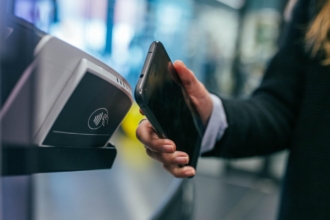Venmo vs Cash App: Features Compared
Life is just easier with apps, isn’t it?
From grocery shopping and depositing checks to signing documents and navigating traffic jams, apps give you fun, useful ways to knock items off your to-do list, no matter where you are in the world.
And with popular mobile payment apps like Venmo and Cash App, you can even send and receive money — quickly, safely, and digitally. Many mobile payment apps are free to download and use, too, letting you split checks with friends or make in-store purchases without charging you an extra cent.
Just so you know…
Jotform lets you accept Venmo and Cash App payments on any device — with no additional transaction fees.
But with so many of these apps on the market, how do you decide which one is best for you? Here’s a comprehensive look at two of the most popular mobile payment apps — Venmo vs Cash App.
Overview of Venmo
Venmo got its start in 2009 after its co-founder Iqram Magdon-Ismail forgot his wallet during a weekend visit in New York City with Venmo’s other co-founder, Andrew Kortina. Since then, Venmo has revolutionized how people send and receive money digitally. It’s easy to set up, free to use, and a bit of a social media platform, as friends and family — even merchants — can “like” or comment on transactions with fun emojis and GIFs.
Venmo even offers a business profile for its users (provided they have a personal account with Venmo first) — enabling small and medium-sized businesses to easily and conveniently accept customer payments and get noticed by the Venmo community. Venmo for business profiles don’t require setup or monthly fees and only charge a low seller transaction fee.
Overview of Cash App
Like Venmo, Cash App is all about sending and receiving money easily, conveniently, and securely. However, with Cash App, you can use its $Cashtag feature to do those things rather than using a bank account number, phone number, or email address (though you’ll need to share that information to register for an account). Once registered, all Cash App users automatically get a unique $Cashtag, or screen name, enabling them to complete online transactions as effortlessly as sending a text message.
Cash App users can also earn discounts and perks at various businesses, design a debit card to match their style, and buy and sell bitcoin and stocks.
Cash App vs Venmo: At a glance
| Feature | Cash App | Venmo |
|---|---|---|
| Owner | Block, Inc. (formerly Square) | PayPal |
| Launch year | 2013 | 2009 |
| Best for | Investing, Bitcoin, simple payments | Social payments, splitting bills |
| Availability | U.S. & U.K. | U.S. only |
| Bank transfers | Free standard (1–3 days), instant (fee) | Free standard (1–3 days), instant (fee) |
| Debit card | Yes (Cash Card) | Yes (Venmo Debit Card) |
| Credit card payments | 3% fee | 3% fee |
| Investing options | Stocks & Bitcoin | None |
| Crypto support | Bitcoin only | Bitcoin, Ethereum, Litecoin, etc. |
| Social feed | No | Yes (default public transactions) |
| Business use | Yes (Cash for Business accounts) | Yes (business profiles) |
| Payment limits | Varies by account verification | Varies by verification |
| Security | PIN, Face ID, encryption | PIN, Face ID, encryption |
| Unique features | Direct deposit, investing, Bitcoin wallet | Social feed, purchase protection |
Venmo vs Cash App: Features
For the most part, Venmo and Cash App are similar, especially since they’re both only currently available within the United States. While they share many similarities, they differ in design, features, and user experience. Here’s a deeper look at how they compare across key categories…
Spending limits
Until your account is verified, you’ll have a person-to-person weekly spending limit of $299.99 with Venmo and $250 with Cash App. Venmo’s verification process is more complex, as it requires a person’s full name, birthday, social security number, and physical address to compare to government data.
Once a user is verified by Venmo, they can send as much as $25,000 per week if they have a Venmo business profile. Cash App requires further identity verification to send or receive more than $1,000 per month.
User experience and interface
Venmo offers a more socially engaging experience, with a built-in feed where users can see transactions shared by friends. This creates a playful, community-driven atmosphere that’s especially appealing to younger users. The app allows you to react to user payments with emojis and comments, making it feel like a social network for money. In contrast, Cash App takes a more minimal and direct approach. Its interface is streamlined and private, focusing entirely on function without any social features. This makes it more appealing to users who value simplicity and privacy.
Payment features and banking tools
Both apps allow you to link your bank accounts and cards for transactions, but they differ in the scope of their financial tools. Venmo supports debit and credit card transactions, offers a branded debit card for everyday spending, and can be used for payments at certain merchants — it also allows users to buy and hold a few major cryptocurrencies. Cash App, however, goes further by offering stock trading, a customizable debit card, and the option for direct deposit — essentially functioning like a lightweight bank. The “Boosts” feature also gives users instant discounts at select retailers, adding more everyday value.
Transfer speed and fees
Transfers on both platforms are fast, but users can choose between standard and instant options. Standard bank transfers take 1 to 3 business days and are free on both apps. If you need your money faster, instant transfers are available but come with a 1.75% fee (with a minimum charge of $0.25). While Venmo allows sending money via a linked credit card (with a 3% fee), Cash App does not currently support credit cards for sending payments, relying solely on debit cards and linked accounts.
Security
Security is a top priority for both apps. Venmo and Cash App use encryption to protect user data and offer PIN codes, as well as biometric login features like fingerprint or face recognition. Venmo allows you to control the visibility of your transactions, but its social feed can lead to privacy concerns if settings aren’t carefully managed. Cash App, by default, keeps your activity private and doesn’t display transactions publicly. However, this level of anonymity has occasionally made Cash App more susceptible to scams, especially when users send money to unknown contacts.
Customer support
Though both Venmo and Cash App offer valuable online resources and helpful FAQs, Venmo has more options in terms of live agents available via phone, chat, and email for many hours throughout the day. Cash App offers similar options, though its help page directs users to try contacting them through their app or website first.
Integration
When it comes to integrating payment platforms into forms, donation pages, or order forms, both Venmo and Cash App are supported by Jotform.
- Jotform’s Venmo integration allows you to collect payments directly through customized online forms. It’s ideal for mobile-first audiences, especially younger users who are already familiar with Venmo’s social payment style. Whether you’re collecting event fees, donations, or product payments, the integration makes checkout seamless by connecting directly to users’ Venmo accounts.
- Jotform’s Cash App Pay integration offers a similarly smooth experience for those who prefer Cash App. This option is particularly useful for small businesses or creators who want to accept payments via their website or social media without building a full e-commerce store. With just a few clicks, users can complete payments through Cash App’s secure platform.
These integrations make it easy to bring the convenience of Venmo and Cash App into your own workflows — no coding required. Both options support Jotform’s extensive customization features, so you can create branded forms that match your needs while offering flexible and familiar payment options to your audience.
Venmo vs Cash App: The right choice for you
Though remarkably similar (even in terms of business account features and fees), the two apps differ when it comes to spending limits, extra verification steps, security, and customer support.
Ultimately, understanding your frequent transactions — how often and how much you send and receive on a weekly basis — will be one of the biggest factors in deciding which app is best for you. You can, of course, use both platforms if you truly can’t decide, as Cash App is perfect for transactions with strangers due to its $Cashtag anonymity, while Venmo is best for those you know personally as well as for sending frequent, recurring payments.
Regardless of whether you choose Venmo vs Cash App, you’ll be well on your way to sending and receiving money more quickly, safely, and conveniently than ever before.
Frequently asked questions
Yes. Both Venmo and Cash App offer free debit cards that let you spend your balance directly. Cash App’s card includes features like “Boosts” (instant discounts), while Venmo’s card offers automatic cash-back at select merchants.
Yes, but with limitations. Venmo allows business profiles, while Cash App has a separate “Cash for Business” account. Keep in mind that both charge fees for business transactions.










Send Comment: